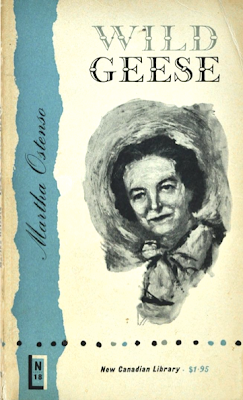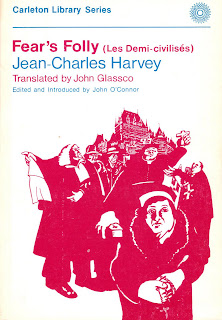Further goodness from the May 1958 issue of The Montrealer with Richler reviewing the New Canadian Library's inaugural offerings. An interesting choice. Richler was no cultural nationalist – never was, as is evident in this piece, written at the age of twenty-seven. He spends the first two-thirds debunking the very notion of a Canadian literature:
Canadian writing is really regional North American writing and not a separate body. English-speaking Canadian novelists obviously have much more in common with their counterparts in the United States than with the French-Canadian writer around the corner.And Canadian writers:
For my money the man who writes the best prose in Canada is Morley Callaghan. Yet he has surely been more influenced by Hemingway and Fitzgerald than by Frederick Philip Grove. He is an American writer. He just happens to live and write about Toronto just as others do about Boston, New Orleans, or Detroit.Before surprising us all:
Whether or not the series goes further will, I guess, depend on public response. The New Canadian Library certainly deserves support.Support it we did – though not always willingly. I'm still a bit pissed off about the copy of Canadians of Old I had to buy for a CEGEP course.
Over the decades the NCL has embraced then dumped many more titles than it has kept – au revoir Jean Rivard – but the first four remain. In fact, all have been subjected to the sixth and most recent series redesign. Expect another before the end of the decade. Here are some excerpts from Richler's review for The
Over Prairie Trails
Frederick Philip Grove
"It's too bad that the series has begun with Over Prairie Trails, because if there is a book that epitomizes all that is boring, ponderous, and self-important about Canadian literature than [sic] this is surely it."
Such Is My Beloved
Morley Callaghan
"I've got a blind spot when it comes to innocent priests and good whores although Mr. Callaghan, no literary slouch, certainly avoids the more obvious sentimentalities."
Literary Lapses
Stephen Leacock
"It seems to me, that this book is only unevenly successful, is already available in numerous editions – even, I think a thirty-five cent pocketbook – and that this further reprint is a redundancy."
As for Me and My House
Sinclair Ross
I'm much more grateful – maybe because it was completely unknown to me – for Sinclair Ross's As For Me And My House… it is, as Professor [Roy] Daniells writes in his preface, "a genuine artistic achievement."
Richler also quarrels with Frank Newfeld's "singularly unattractive" series format, singling out As for Me and My House: "Mr. Ross, whom I've never met, is drawn here to look like a comic strip detective."
I wonder what he thought about this 1965 Newfeld cover for New Canadian Library No. 45.
A bonus: The "thirty-five cent pocketbook" of Literary Lapses to which Richler refers is almost certainly the 1945 Collins White Circle edition. There had been no other. However, he is mistaken as to availability and price: the imprint ceased to be in 1952; all printings were priced at 25 cents.
The cover is by Margaret Paull, whose work also graces the Collins White Circle Sunshine Sketches of a Little Town.
Related posts:






















































